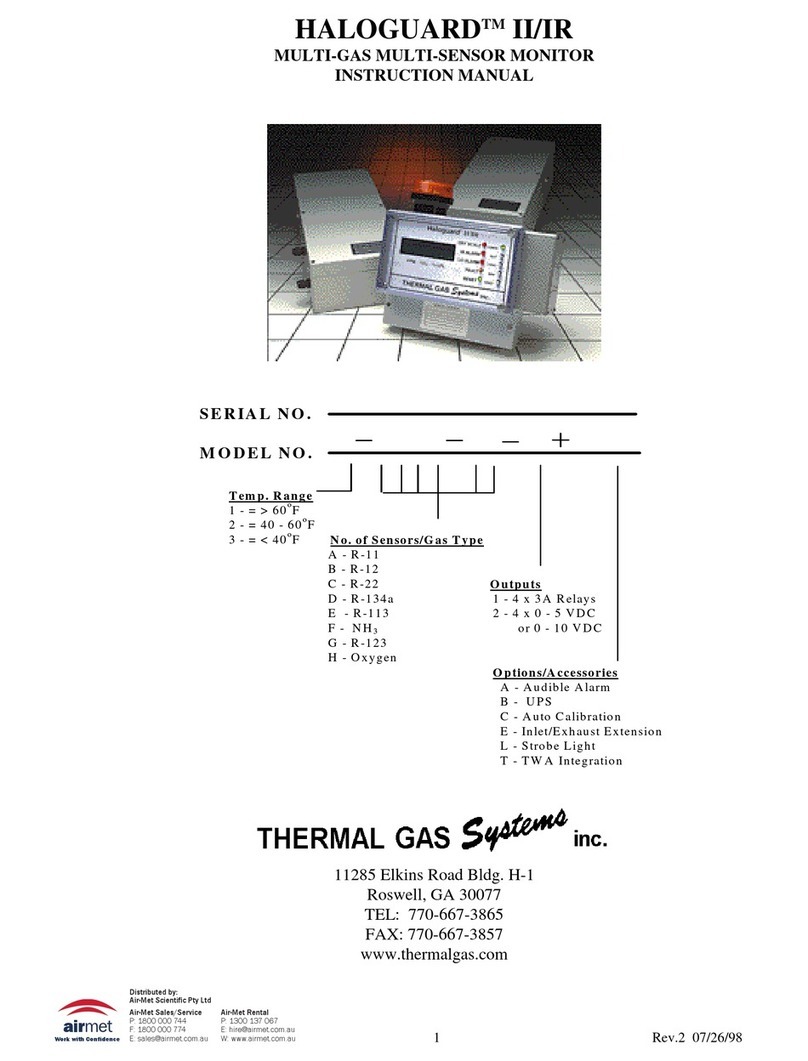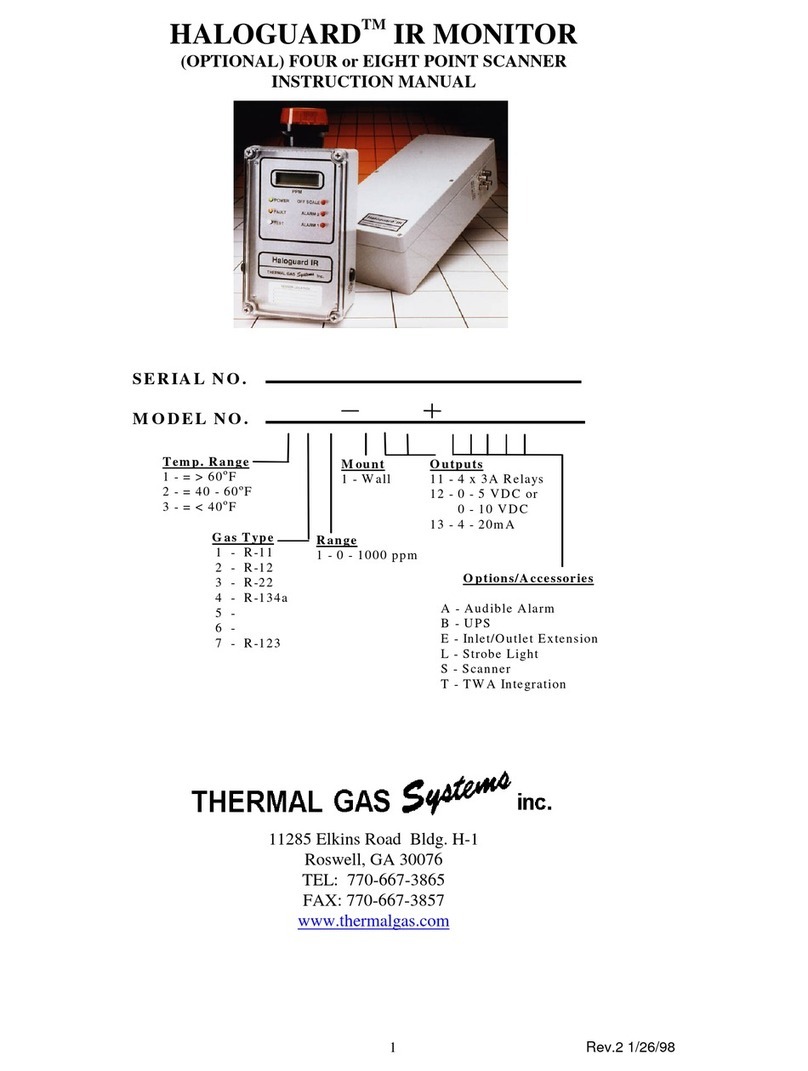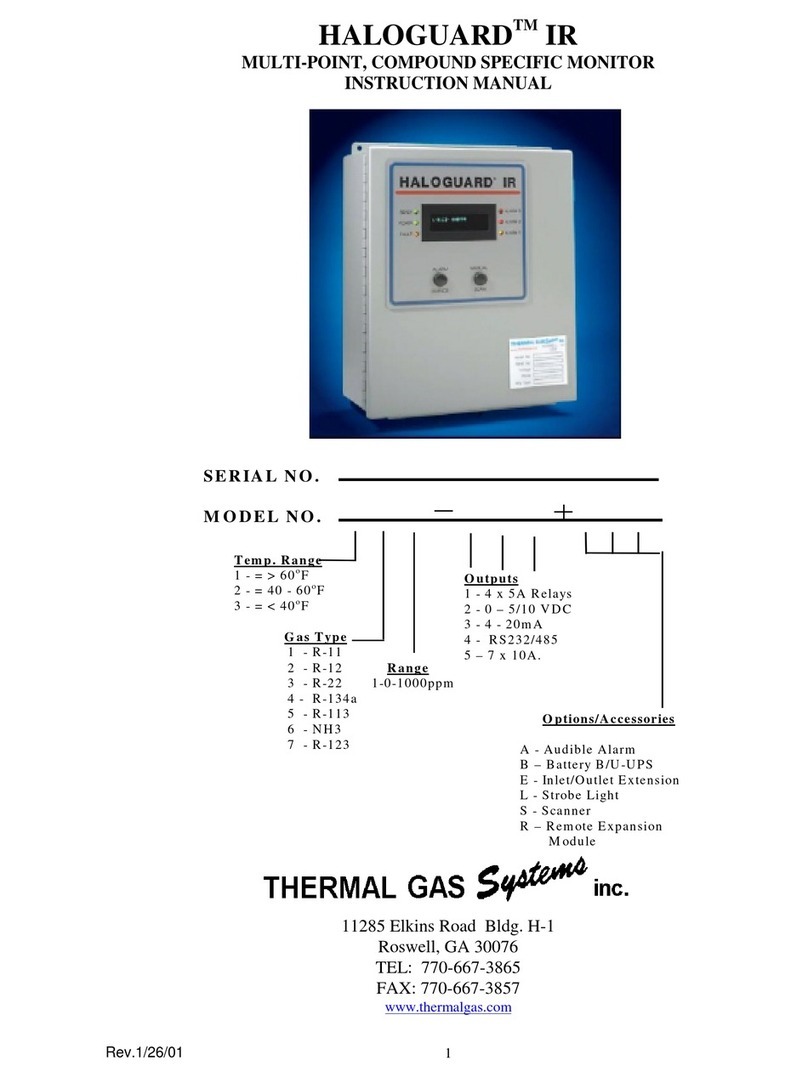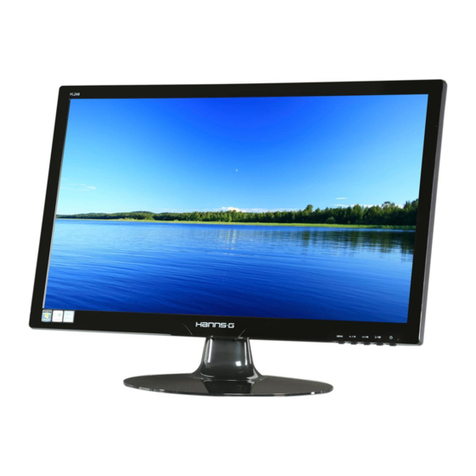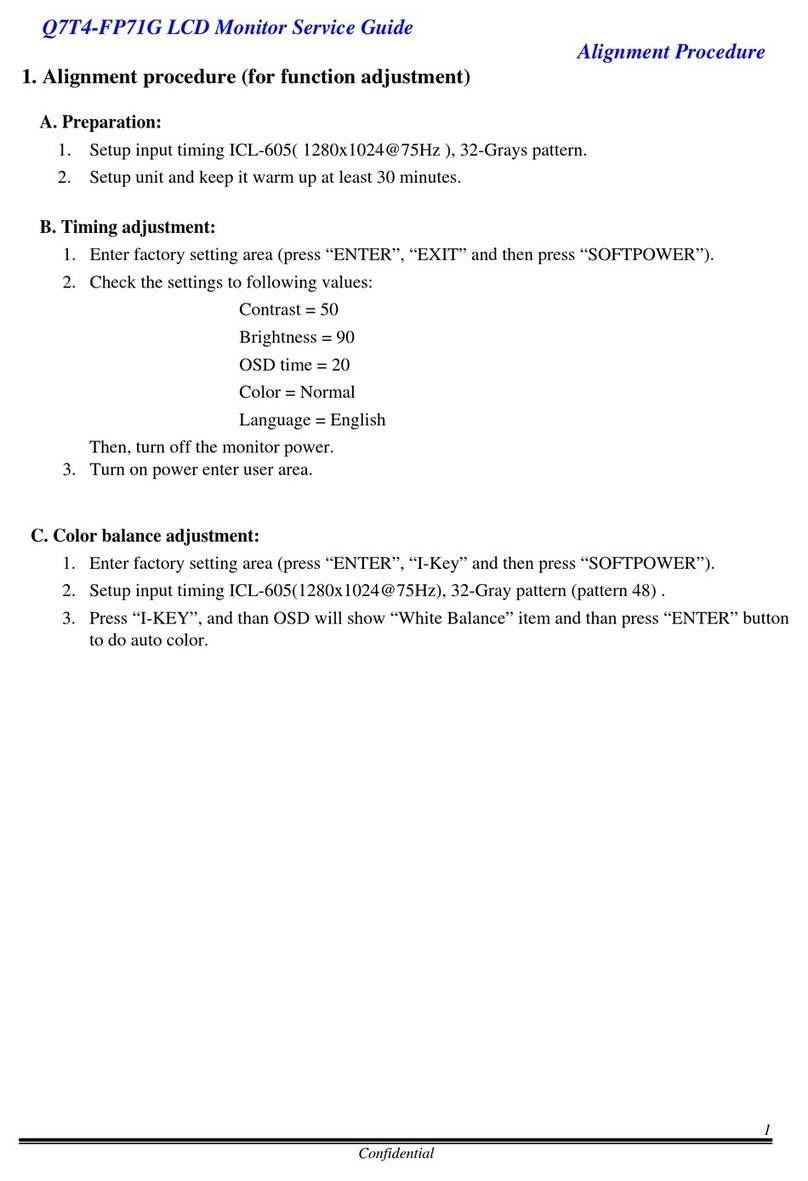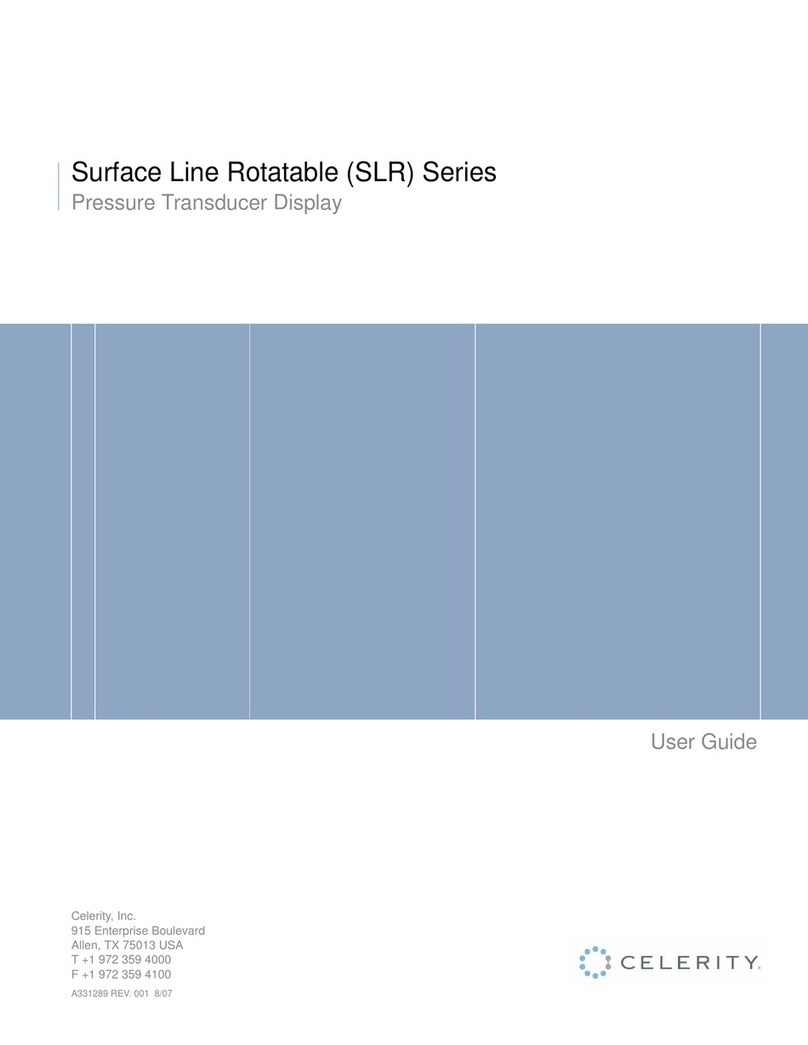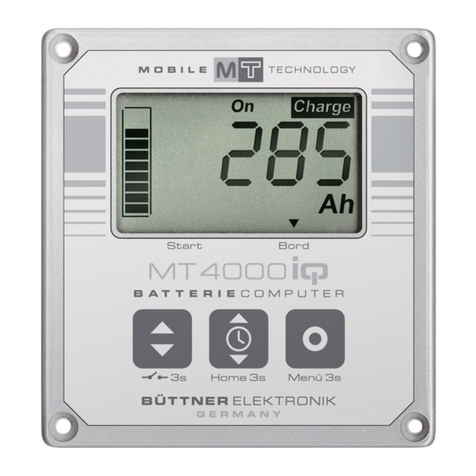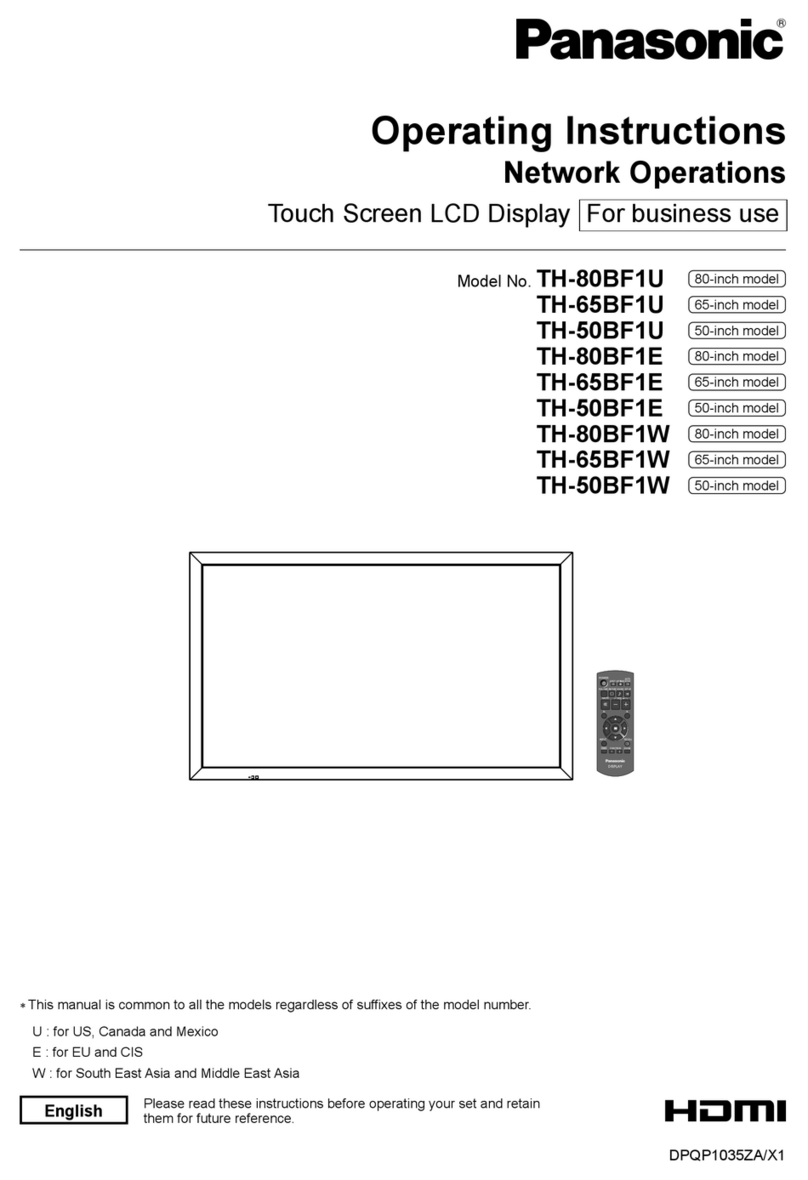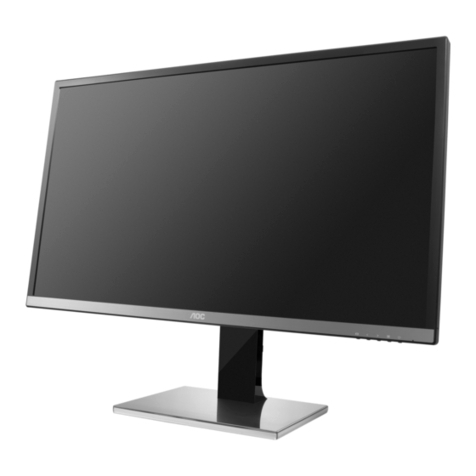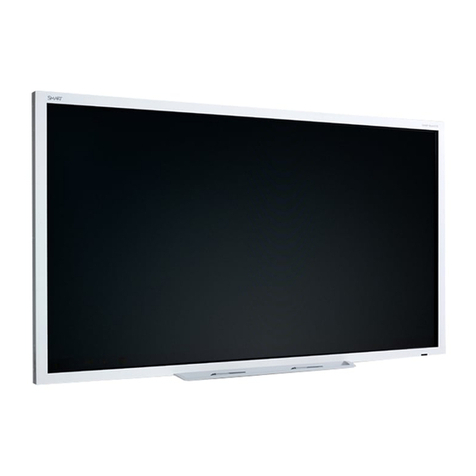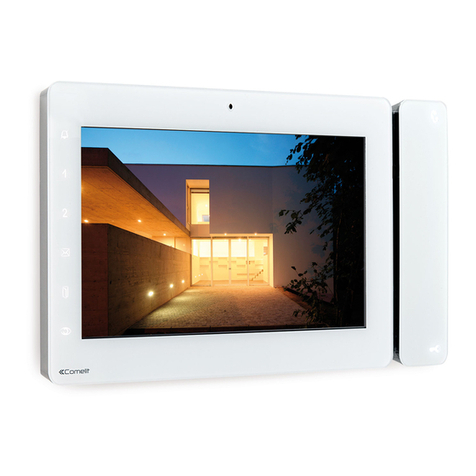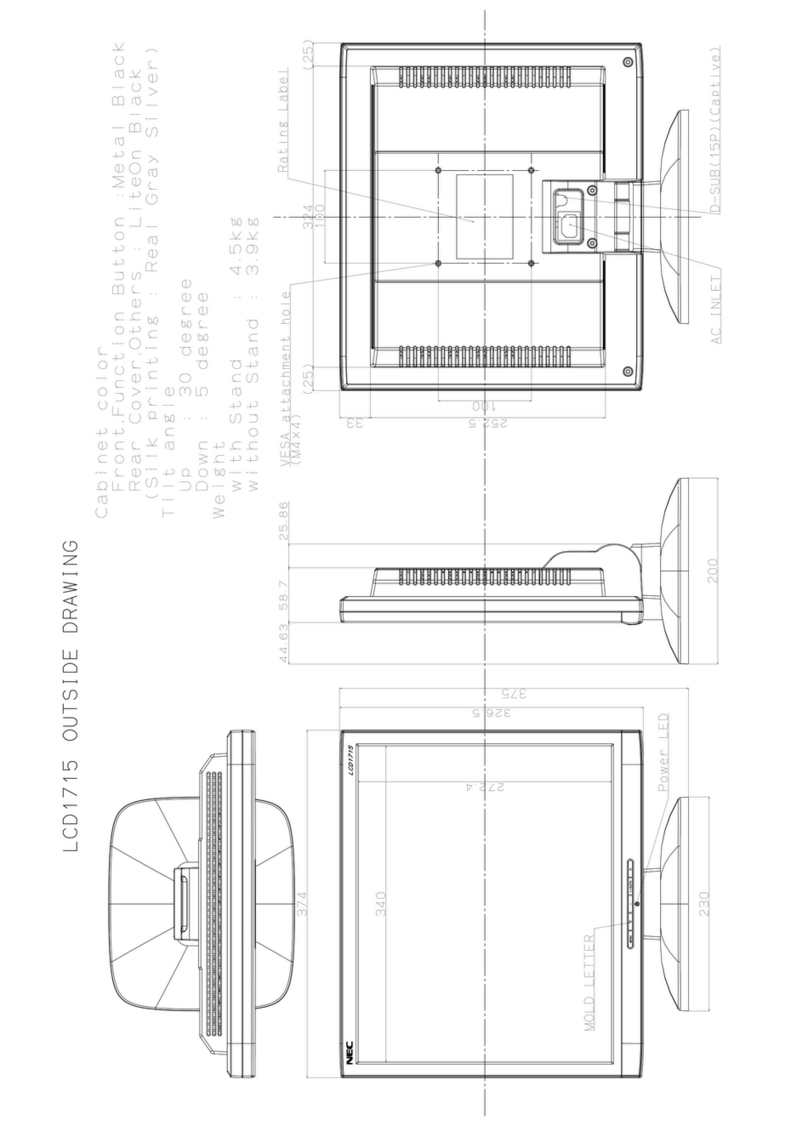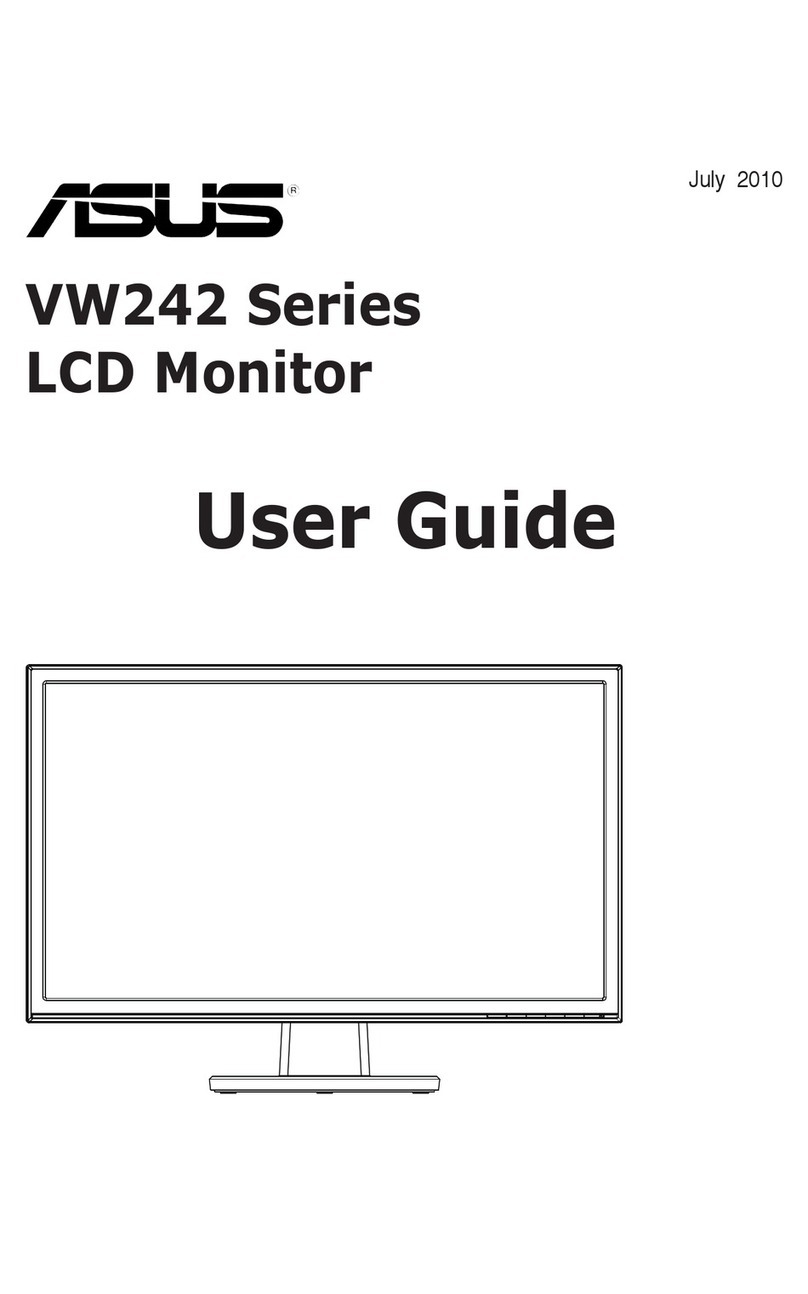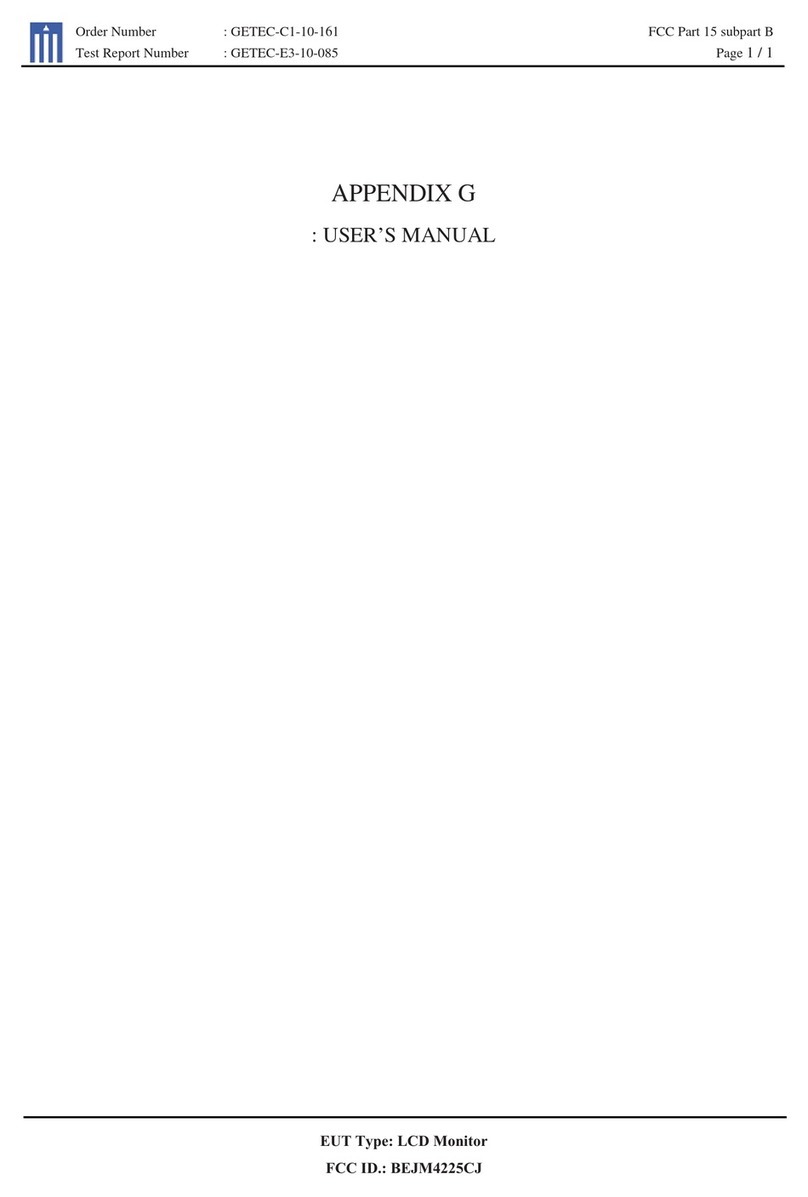Thermal Gas Systems HALOGUARD MONITOR User manual

1
091197 Rev. 2 h1man.doc
HALOGUARDTM MONITOR
INSTRUCTION MANUAL
SERIAL NO.
MODEL NO.
Temp. Range
1 - = > 60oF
2 - = 40 - 60oF
3 - = < 40oF
Gas Type
1 - R-11
2 - R-12
3 - R-22
4 - R-134a
5 - R-502
6 - R-500
7 - R-123
L - Strobe Light
Range
1 - 0 - 1000 ppm
2 - 0 - 300 ppm
Mount
1 - Wall Outputs
11 - 4 x 3A Relays
12 - 0 - 5 VDC or
0 - 10 VDC
13 - 4 - 20mA
Options/Accessories
A - 110dB Audible Alarm
B - 1 Hr. Battery Back-up
C - Auto Calibration
L - Amber Strobe Light
T - TWA Integration
11285 Elkins Road Bldg. H-1
Roswell, GA 30076
TEL: 770-667-3865
FAX: 770-667-3857
www.thermalgas.com
Distributed by:
Air-Met Scientic Pty Ltd
Work with Confidence
Air-Met Sales/Service
P: 1800 000 744
F: 1800 000 774
Air-Met Rental
P: 1300 137 067
W: www.airmet.com.au

2
091197 Rev. 2 h1man.doc
IMPORTANT
READ ENTIRE BOOKLET BEFORE
INSTALLING OR OPERATING
HALOGUARDTM MONITOR
TABLE OF CONTENTS
Page
1. Unpacking Instructions 3
2. Before Installation 3
3. Installation 6
4. Calibration 9
a. Zero Calibration 9
b. Span Calibration 9
5. Testing 9
6. Trouble Shooting 9
7. Specifications 10
8. Glossary 11
FIGURES Page
1. Dimension Drawing 4
2. Controller Upper Circuit Board 5
3. Controller Lower Circuit Board 5
4. Controller LCD Display Features 6
5. Analog Output Jumper and Terminal Settings 6
6. Function Jumper Settings 7
7. Analog Output Linear Scale Settings 8
8. Sensor Cable Terminal Connection 8
9. Initial Factory Settings 10
10. Exposure Limits 10
11. Wiring Diagram 12

3
091197 Rev. 2 h1man.doc
UNPACKING INSTRUCTIONS
HaloguardTM monitors are carefully packed, inspected and delivered to the carrier in good condition.
If damage occurs in transit it is the responsibility of the carrier.
Carefully inspect the unit upon receipt. Any damage should be reported to the carrier and an
inspection requested. After inspection by the carrier and your receipt of his acknowledgment as to
the damage, contact us for return authorization (RMA). We cannot file claims for damaged goods
on your behalf, but we will assist you in any way we can.
In order to expedite our work, please provide serial number and purchase date when you call.
WE CANNOT ACCEPT RETURNS WITHOUT PRIOR APPROVAL.
BEFORE INSTALLATION
1. Remove HaloguardController and sensor from carton. Check contents against packing list. If
shipment is incomplete, contact us immediately.
2. The following tools and hardware are required for installation and calibration.
a. Two standard & one philips screwdrivers; 1 - medium standard w/ long shaft, 1 - jewelers
fine standard & 1 - medium philips.
b. Needle-nosed electrician’s pliers
c. (4) No. 8 x 1” Screw (minimum)
d. Digital VOM
3. Select the site for the measurement:
a. Power requirements: Provide a clean source of 115-230 VAC, 50/60 Hz, single phase circuit
rated 15A minimum.
b. Sensor should be mounted near potential leaks in a quiet area or downstream from leak
source in area with air movement.
c. Sensor should be mounted 18” - 24” above the floor for halocarbons. Maximum extended
sensor cable length is 300 Ft.
d. Make sure the area selected is not subject to flooding, potential impact or severe ambient
temperature and humidity changes (i.e. boiler blow-down or near roll-up doors).
IMPORTANT
SENSOR ELEMENT CAN BE DESTROYED BY IMMERSION IN LIQUIDS OR
EXPOSURE TO SILICONE. COVER SENSOR WITH A PLASTIC BAG WHEN
SILICONE VAPORS ARE PRESENT IN MONITORED AREA. IMMERSION OR
SILICONE EXPOSURE INVALIDATES SENSOR LIFE WARRANTY.
e. Sensors will respond to presence of alcohol, hydrogen, carbon monoxide, paint thinner, and
many toxic and combustible gases. For accurate refrigerant leak detection select a location
free from above fumes or temporarily disable sensor as above when they are present.
4. The wall mounted controller should be installed indoors, approximately five feet above the floor
(or at a location easily visible to operators), in an area with minimal vibration, and with
temperature and humidity changes like sensor location.

4
091197 Rev. 2 h1man.doc
IMPORTANT
CONSULT LOCAL AND NATIONAL ELECTRICAL CODES FOR ANY SPECIAL
REQUIREMENTS OR RESTRICTIONS BEFORE INSTALLING HALOGUARD.
5. Selectors, LCD/LED Displays, and Relays
a. POWER LED- Green LED indicates Haloguardis receiving AC power. LED turns
Yellow when on (optional) Battery Back-up power.
b. FAULT Alarm LED and Relay - Indicates out of calibration or sensor failure. LCD
indicates specific type of failure (See Figure 4).
c. TEST Push-button - Energizes lights & relays. Depress button five (5) times to sequence
through each alarm type.
d. Alarm LED - Alarm 1/Alarm 2 LEDs and Relays - Factory set for specific refrigerant (See
Figure 9 for set-up). User adjustable as follows:
RANGE 1 PPM
INCREMENTS 10 PPM
INCREMENTS
0 - 300 ppm 30 -100 100 - 300
0 - 1000 ppm 100 - 300 300 - 1000
Note: Optional TWA Integration activates Alarm 1 LED and relay when installed.
TLV-TWA Alarm is factory set and not user adjustable.
e. OFFSCALE Alarm LED and Relay - Factory set at a value 2 - 3 times the full scale (See
Figure 9).
f. RESET Push-button - Silences alarms, disables relays, and resets instrument for 20
minutes. LCD displays *CAUTION* and RESET with 20 minute countdown. Alarms are
automatically reactivated if alarm condition is not corrected. Reset is automatically initiated
on start-up and after power failure (Except when optional battery back-up is provided.).
6. Optional Features:
a. AutoCalibration - Haloguardcompares Temperature and RH every 4 hours to compensate
for changes in ambient conditions.
b. TWA Integration - Haloguardcalculates an 8 hr. Time Weighted Average (TLV-TWA),
displays this value on LCD, activates Alarm 1 LED and relay if preprogrammed PPM value
is exceeded. (Must be powered up for 8 hrs. to build data base before operating).
Alarm 1 is pre-programmed to the TLV-TWA for specified gas.
Figure 1 - Dimensional Drawing
HALOGUARD
CONTROLLER
5 1/2” 4”
9”
3/4”

5
091197 Rev. 2 h1man.doc
LCD Brightness
Adjustment
1 2 3 4 5 6 10 11 127 8 9
ALARM 1FAULT OFFSCALEALARM 2
Figure 3 - Controller Lower Circuit Board
RUN
GAS
ALARM
ZERO
SPAN
AUD
J5
ANALOG
VOLT m
A
IC
Offscale LED
Alarm 2 LED
Alarm 1 LED
Power LED
Fault LED
Test Butto
n
CMOS
Sensor
Trim
Analog Trim Pot
0-5 or 0-10 VDC
UPENTER DOWN
Sensor
Connection
(Optional)
RS-232
Reset Button
Figure 2 - Controller Upper Circuit Board
Setup Jumpers
Analog Output
Jumper
(Optional)
Processor
Chip

12/10/01 Rev. 2 h1man.doc
6
CONCENTRATION
(ppm)
ALARMS
- ALARM 1
- ALARM 2
- FAULT
- LATCH ON
- OFF SCALE
- RESET
SET UP MESSAGES
GAS - SET GAS TYPE
ALARM - SET ALARM 1 (ppm)
SET ALARM 2 (ppm)
ZERO - SENSOR ZEROED
SPAN - (ppm) SET SPAN
FAULT MESSAGES
- CAUTION
- DISCONTINUITY
- LOW BATTERY
Gas Type (R-11, R-12, R-123, R-134, etc.)
Figure 4 - Controller LCD Display Features
8 hr. TWA Concentration
(R-123)
INSTALLATION
1. Check power supply. (See Section “Before Installation 3a”)
2. Disconnect power before beginning.
3. Installation of HaloguardController (Standard Factory Settings. See Section 4, Page 8, if
extension cable is required.):
a. To mount HaloguardController
1. Remove Plastic cover.
2. Install No. 8 x 1” screw (minimum) wall fastener through cover screw holes.
Refer to figures 2, 3, and 4 before proceeding.
b. Wiring Instructions:
1. Remove face plate from HaloguardController using screw driver.
2. Attach Sensor cable to HaloguardController. Eight feet (8FT.) of cable with DIN connectors
standard; optional extension cables are available (Follow instruction in Section 4, Page 8, when
extension cables are used).
3. Relay Terminals - Connect alarm relays (NO or NC) (Figure 3 - Controller Lower Circuit Board)
as required.
**WARNING** ANALOG OUTPUT IS A DRIVEN SIGNAL - DO NOT CONNECT ANY WIRE WITH
VOLTAGE OR CURRENT TO ANALOG OUTPUT TERMINALS.
4. Analog Output (Optional) - Factory installed. Connect 18 ga. twisted shielded pair to Controller
Upper Circuit Board (See Figure 2), as follows:
Analog Output Range Wire Terminations
0-5VDC or 0-10VDC VDC (+) COM (-)
4 - 20mA mA (+) COM (-)
Figure 5 - Analog Jumper and Terminal Settings

12/10/01 Rev. 2 h1man.doc
7
5. Battery Back-Up (Optional) - Connect battery to Molex connector located at Haloguard
Controller.
6. Strobe Light (Optional) ) - Connect battery to Molex connector located at Haloguard
Controller.
c. For 20 minutes after initial power up all alarm relays and alarm are automatically disabled. During
initial power-up, RESET and 20 minute count down will appear on LCD. Whenever power is
disrupted, RESET MODE will be automatic (unless battery back-up is supplied) to protect against
false alarms.
d. Locate Setup jumpers on Figure 2 - Controller Upper Circuit Board. Select required settings from the
following:
JP FUNCTION
RUN Select run for normal operation
GAS Set Gas Type
ALARM Alarm 1 and Alarm 2 Set Point Adjustment
ZERO Factory Set - For Internal Use Only
SPAN Factory Set - For Internal Use Only
J5 For Internal Use Only
AUD Audible Alarm Disable
Figure 6 - Function Jumper Settings
1. RUN - Remove jumper to initiate Set-Up Mode. Use jumper to initiate the following set-up
modes. Replace jumper when finished.
2. GAS - Gas type will be pre-set at the factory (See Figure 9). If refrigerant type has changed,
follow menu to scroll to correct settings.
3. Alarm - Alarm levels will be pre-set at the factory. Scroll through menu to set up Alarm 1 and
Alarm 2. Adjust alarm levels using UP/Down and ENTER push-buttons.
4. ZERO - Factory set. Follow instruction under Zero Calibration.
5. SPAN - Factory set.
6. AUD - Audible Alarm (optional) is factory installed to activate internal audible alarm circuit. To
disable alarm remove “AUD” jumper.
e. System Set-up:
1. Relay Setup - Factory setting is Unlatched Mode; The alarm LEDs and relays will return to a
normal status when gas concentration goes below alarm setpoint. To select Latched Mode place
jumper on ALARM JP setting. Press TEST button until “LATCH ON” appears on the LCD
Display. (LATCH ON mode requires manual RESET of all alarms.)
2. Analog Output (optional) is factory set at 0 - 5VDC, 0 - 10VDC or 4 - 20mA as ordered. To
connect to BAS/EMS System, make sure that system is configured to receive the type analog
output ordered. To test analog output:
a. With VOM set on proper scale (mA or VDC), connect VOM to mAor VDC and COM
terminal as required (See Figure 5).
b. Press TEST button once VOM value should indicate ZERO value in table below. Press
TEST button again, VOM should indicate OFFSCALE value in table below.

12/10/01 Rev. 2 h1man.doc
8
PPM 0-5 VDC 0-10 VDC **4-20mA
Zero 0000
Span Full Scale* 4.5 V 9 V 18 mA
Offscale 5.0 V 10 V 20 mA
* See Initial Factory Settings Figure 9 for Full Scale Settings.
** Factory Set. Not adjustable.
Figure 7 - Analog Output Linear Scale Settings
c. If VOM for VDC setting only does not indicate values above, adjust Analog Trim Pot (Refer
to Figure 2) to reflect the Offscale Value for corresponding Analog Output.
3. LCD display adjustment changes brightness - Factory set. If necessary, adjust potentiometer
(See Figure 2- Controller Upper Circuit Board).
4. Installation of HaloguardController and (Extended Cable Procedure)
Refer to FIGURE 2 - Controller Upper Circuit Board before proceeding.
DO NOT CUT SUPPLIED CABLE
Maximum Extension wire 300 Feet.
a. Controller is provided with 18” cable with DIN Connector and sensor is provided with 6-1/2’
cable. If cable extension is provided by customer, proceed as follows:
We recommend 3 conductor 18 ga. cable with foil shield, Carol C0455 or equal. Use
3/4” conduit if required.
b. To extend sensor beyond the provided length, remove 18” cable with DIN connector from
controller Lower Circuit Board. Splice or solder extension cable to end of 18” cable.
Reconnect extended sensor cable to terminal block in upper circuit board of controller.
Terminal Provided
Wire Color Extension
Wire Color Function
+V Red Red 7.5 VDC
SIG White White Signal
GND Blk./Blk Black Ground
Figure 8 - Sensor Cable Terminal Connection
Remove Alarm Jumper “AUD” before beginning calibration.
c. Calibrate with a digital VOM as follows:
(Unit must be operating for at least twenty-four (24) hours before calibration.)
1. Open cover on the Haloguard
Controller and remove faceplate.
2. With VOM on 5 VDC scale, place VOM probe on SIG (+) and GND (-) Test points on
Controller (see Figure 2 Controller Upper Circuit Board).
Adjust “C” potentiometer on Controller Upper Circuit Board, with screwdriver
until it reads 1.000 VDC.
3. Replace AUD jumper to activate alarms circuit.

12/10/01 Rev. 2 h1man.doc
9
Remove Alarm Jumper “AUD” before beginning calibration.
ZERO CALIBRATION
ROOM AIR MUST BE CLEAN OF GAS OR OTHER CONTAMINANTS.
1. Remove jumper from RUN jumper and place on ZERO jumper.
2. Place sensor in clean air source (clean ambient air or Zero gas) for two minutes then follow
procedures on display.
3. When complete remove jumper on Haloguard
Controller from ZERO and replace on RUN.
4. Replace AUD jumper to activate alarms circuit.
SPAN CALIBRATION
Span calibration is factory set. Span calibration is not required for operation in typical machine room
environments. Instructions for span gas calibration are furnished with calibration kit.
TESTING
The HaloguardTM should be tested periodically and 30 minutes after each alarm level condition has been
corrected.
a. Alarm Test - Push TEST button five times to check; alarm relays, lights, audible and remote
alarms (if equipped) will activate.
b. Reset Test - Push RESET button; alarm relays, audible and remote alarms (if equipped) will become
inactive for 20 minutes. Display will read “RESET” and indicate minutes to completion of reset.
TROUBLESHOOTING
The most frequent cause of nuisance alarms is improper set-up, primarily due to:
a. Too short a warm-up time.
b. Poor sensor location.
c. Failure to follow SET-UP procedures properly.
d. Sensor cable is not wired and/or trimmed properly when extended beyond factory supplied length.
To periodically check Zero Calibration, fill a clean plastic trash bag with clean outside air, tie off with twist-
tie, let sample stabilize inside for 15 - 20 minutes and insert sensor into bag.
Follow Zero procedures under “Calibration” Section. Remove sensor from bag and observe LCD response.
If PPM then moves higher, look for possible sources of interfering gases (See “Before Installation” section
3e). and relocate sensor.
We wish to aid with any problems you might experience with the Haloguardline of products. When
contacting Thermal Gas Systems, Inc. Service Department, your assistance is requested to provided the
following information.
1. Model Number and Serial Number.
2. Description of problem.
3. Remove faceplate from Controller (Figures 2 and 3) . Place jumper on Alarm setting. Scroll through
menu by depressing ENTER push-button, and record settings.
4. Using (Figure 2 - Controller Lower Circuit Board) as a guide, measure voltage between SIG and
GND. Write down values.
5. Advise the condition of all LED’s and any information displayed on the LCD.
6. Place Jumper on J5 - Record Code Version Number and Sensor Type.

12/10/01 Rev. 2 h1man.doc
10
SPECIFICATIONS
Technology: CMOS (Ceramic Metal Oxide
Semiconductor)
Electrical Supply: 115-230 VAC, 50-60Hz
Output Signal: Std. 4 x 3A Dry Contact Relays
(either NO or NC)
Analog Output Opt. 0-5 VDC, 0-10 VDC or 4-20mA
Alarm Outputs: Three Level Contact Closure
Readout: Digital Meter, Displayed in PPM
Gas Type, Range and Options
Accuracy: 10% Full Scale
Ranges: 0 - 1000 ppm R-11,R- 12, R-22,
R-134a, R-500, R-502
0 - 300 ppm R-22, R-123, R-134a
Response Time: < 1 Minute
Recovery Time: < 3 Minutes
Operating Conditions:
CMOS Sensor -20oF to +120oF Non-condensing
Controller 0oF to +120oF Non-condensing
Fault Diagnostics: Indicator Light or Readout for
Malfunction which include:
(See Figure 4)
Materials:
Controller Polystyrene, NEMA 12/13, IP65
Design
Sensor PVC and porous PP
Weight:
Controller: 5 lbs. (Add 2 lbs. optional battery)
Dimensions:
Controller 5- 1/2” W x 9” H x 4”D
Initial factory settings are:
Function Setting
Gas
Alarm 1
Alarm 2
Full Scale
PPM
TWA Alarm
Level
Figure 9 - Initial Factory Settings
GAS TLV-
TWA* CEIL PEL
R-11 •1000 •
R-12 1000 •1000
R-22 1000 •1000
R-123 30 ••
R-134a 1000 •1000
R-500 1000 •1000
R-502 1000 ••
Other exposure limits are pending.
TLV-TWA = 8hr./day, 40hr./wk. avg. Short term exposures should not
exceed 3 - 5 times the TWA for more than 30 min./day.
* ACGIH Trademark.
Figure 10 - Exposure Limits

12/10/01 Rev. 2 h1man.doc
11
GLOSSARY
1. AEL - Allowable Exposure Limits - The employee’s average airborne exposure in any 8-hr
work shift of a 40 hr. work week, which shall not be exceeded. (Recommended by
refrigerant manufacturer).
2. CMOS - Ceramic Metal Oxide Semiconductor
3. CONTROLLER - Processor mounted on wall which includes LCD Display, LED Alarms
Relays, and other functions
4. SPAN - A full-scale reading on the LCD display.
5. SPANNING - The process of placing a full-scale reading on the LCD display.
6. SPAN GAS - The gas concentration that gives the instrument a full scale value. Used for
calibration standard.
7. TLV - ACGIAH Threshold limit value.
8. TWA - Time weighted average.
9. TLV-TWA - The time -weighted average concentration of a refrigerant or other chemical in
air for a normal 8 hr. workday and a 40 hr. workweek, to which nearly all workers may be
repeatedly exposed, day after day, without adverse effects.
10. ZERO - An indication on the display indicating the presence or non-presence of CFC’s,
HCFC’s or HFC’s.
11. ZEROING - The process of placing a zero indication on the LCD display.

12/10/01 Rev. 2 h1man.doc
12
WARNING
Analog output lines
must not be connected
to any kind of voltage
or current source,
serious damage will
result.
(OPTIONAL)
STROBE
LIGHT
N
otes:
1. Power Cord - Provided w/ wall plug connector and 8 Ft. 3 conductor wire.
2. Audible and Visual Alarm (Optional) factory wired. Remote Audible and Visual Alarms
must be 120VAC and connected to terminal Strip on Lower Circuit Board.
3. Sensor Cable between HaloguardController and CMOS Sensor - Maximum Length 300FT. Use
3 conductor 18 or 20ga. w/ foil shield.
4. Analog Outputs (Optional) are either 0 - 5VDC, 0 - 10VDC, or 4 - 20mA.
Figure 11 - Wiring Diagram
8’ Cable w/ DIN Plug in Connector
See notes below for cable extension.
Lower Circuit Board
ANALOG OUTPUTS
TO BAS OR OTHER
+V S G
HALOGUARD
CONTROLLER
(OPTIONAL)
AUDIBLE ALARM
+ A + S
See Chart for
Connection
+
-
(Optional)
BATTERY
BACK-UP
Plug in Molex Connecto
r
1 32 4 65 7 98 10 1211
ALARM
1
FAULT OFFSCALE
ALARM
2
Green
Line Cord
115 VAC
50/60Hz.
AC HOT
ACCOMMON
GROUND G
N
L
White
Black
Cable Color Code
White - S Signal
Black - G Ground
Red - +V 7.5 VDC
Table of contents
Other Thermal Gas Systems Monitor manuals
